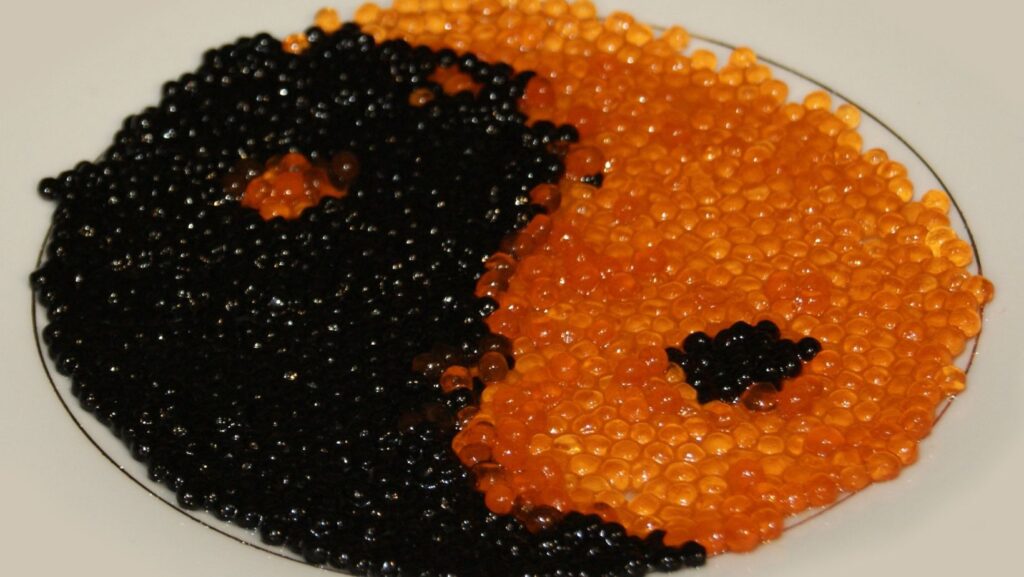Caviar, often synonymous with luxury and indulgence, is more than just a delicacy—it is an experience that embodies centuries of culinary tradition. Originating from sturgeon fish, caviar consists of the fish’s salted eggs, known as roe. While many associate caviar with extravagant events and fine dining, understanding its types and learning to taste it properly can elevate your culinary appreciation to a professional level.
Understanding the Different Types of Caviar
Not all caviar is created equal. Its taste, texture, and price are influenced by the species of sturgeon, the method of harvest, and the region it comes from. Here are the most well-known types:
1. Beluga Caviar
Beluga caviar, sourced from the Beluga sturgeon in the Caspian Sea, is arguably the most famous and expensive variety. Its large, soft, pearly gray eggs offer a delicate, buttery flavor with a subtle nutty undertone. Due to its rarity and long maturation period, Beluga caviar is often reserved for special occasions.
2. Osetra Caviar
Osetra caviar comes from the Osetra sturgeon and varies in color from golden to dark brown. It is prized for its firm texture and rich, nutty flavor. The golden Osetra eggs are especially sought after, offering a slightly sweeter and more complex taste profile compared to darker varieties.
3. Sevruga Caviar
Sevruga caviar, harvested from the smaller Sevruga sturgeon, features tiny, gray eggs with a more pronounced, briny flavor. While less expensive than Beluga or Osetra, Sevruga is still considered a delicacy and appeals to those who enjoy a stronger, more pronounced caviar experience.
4. American Caviar
The United States produces a growing variety of caviar, particularly from the Hackleback, Paddlefish, and White Sturgeon. American caviar tends to be more affordable and offers a range of flavors, from sweet and mild to earthy and robust. This makes it an excellent choice for newcomers looking to explore caviar without committing to the high cost of imported varieties.
How to Taste Caviar Like a Pro
Tasting caviar is as much an art as it is a science. Professional tasters follow certain techniques to fully appreciate its delicate nuances. Here’s how to approach it:
1. Use the Right Utensils
Avoid metal spoons, as they can impart a metallic taste that masks the caviar’s subtle flavors. Instead, opt for mother-of-pearl, bone, or horn spoons, which are neutral and preserve the integrity of the roe.
2. Observe the Caviar
Start by examining the color, size, and consistency of the eggs. High-quality caviar has uniform eggs with a glossy appearance. Variations in color may indicate different sturgeon species or levels of maturity.
3. Smell Before Tasting
A gentle sniff can reveal much about the caviar’s freshness. It should have a clean, oceanic aroma without any fishy or overly strong odors.
4. Taste the Caviar Properly
Place a small amount of caviar on the back of your hand between your thumb and forefinger. This traditional method allows the caviar to warm slightly, enhancing its flavor. Pop the eggs directly into your mouth rather than chewing immediately. Allow them to burst gently on your tongue to savor the subtle, briny taste. For a more exploratory experience, consider trying a caviar sampler, which lets you compare multiple types side by side and discover your personal favorites.
5. Pairing and Serving
Caviar is traditionally served chilled, often on a bed of crushed ice. Simple accompaniments such as blinis, lightly buttered toast, or unsalted crackers let the caviar shine. Champagne or dry vodka are classic pairings that complement its delicate flavor without overpowering it.
Final Thoughts
Caviar is not just a luxury food; it is a culinary journey that rewards those who approach it with patience and curiosity. Understanding the different types—Beluga, Osetra, Sevruga, and American caviar—helps you appreciate the subtle distinctions in flavor, texture, and color.
By learning the proper tasting techniques, from using the right utensils to savoring each egg, you can elevate your experience from casual consumption to refined tasting.
Whether celebrating a special occasion or simply indulging in a new culinary adventure, tasting caviar like a pro allows you to appreciate its artistry and heritage. In the end, the magic of caviar lies not only in its flavor but in the ritual of enjoying it thoughtfully, one delicate pearl at a time.



